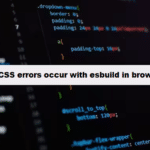PHP runs on the server side, while localStorage is a feature of web browsers that allows you to store data on the client side. To add a string to localStorage using PHP, you’ll typically use PHP to generate JavaScript code that interacts with localStorage. Here’s how you can do this:
Example of Adding a String to localStorage in PHP
- Generate JavaScript with PHP: You can use PHP to echo a JavaScript snippet that sets a value in localStorage.
#php #html
<?php
// Example string to store
$stringToStore = "Hello, World!";
?>
<!DOCTYPE html>
<html lang="en">
<head>
<meta charset="UTF-8">
<meta name="viewport" content="width=device-width, initial-scale=1.0">
<title>LocalStorage Example</title>
<script>
// Use PHP to add a string to localStorage
const stringToStore = "<?php echo addslashes($stringToStore); ?>";
localStorage.setItem("myString", stringToStore);
console.log("Stored in localStorage:", localStorage.getItem("myString"));
</script>
</head>
<body>
<h1>Check the Console for LocalStorage Output</h1>
</body>
</html>Review:
- PHP Variable: A PHP variable
$stringToStoreholds the string you want to store in localStorage. - addslashes: This function escapes any quotes in the string to prevent JavaScript errors.
- JavaScript: The PHP code is embedded within a JavaScript block, which executes when the page loads. It uses
localStorage.setItemto store the string. - Console Log: A message is logged to the console to verify that the string has been stored successfully.
Running the Code
- Save the PHP code in a
.phpfile on your server. - When you open the page in a browser, it will store the string in localStorage and log it to the console.
Accessing the Stored Value
You can access the stored value from localStorage later in your JavaScript code like this:
#javascript
const storedValue = localStorage.getItem("myString");
console.log("Retrieved from localStorage:", storedValue);This way, you can manage client-side storage in your web applications while using PHP to facilitate the process.
Developers Simplify Complex Code at Coding Filters!
Developers often struggle with overly complex code that is hard to maintain and debug. By applying coding filters, developers can break down complex tasks into smaller, more manageable pieces, resulting in simpler, cleaner code. Filters help to target specific data or processes, enhancing both performance and readability.




